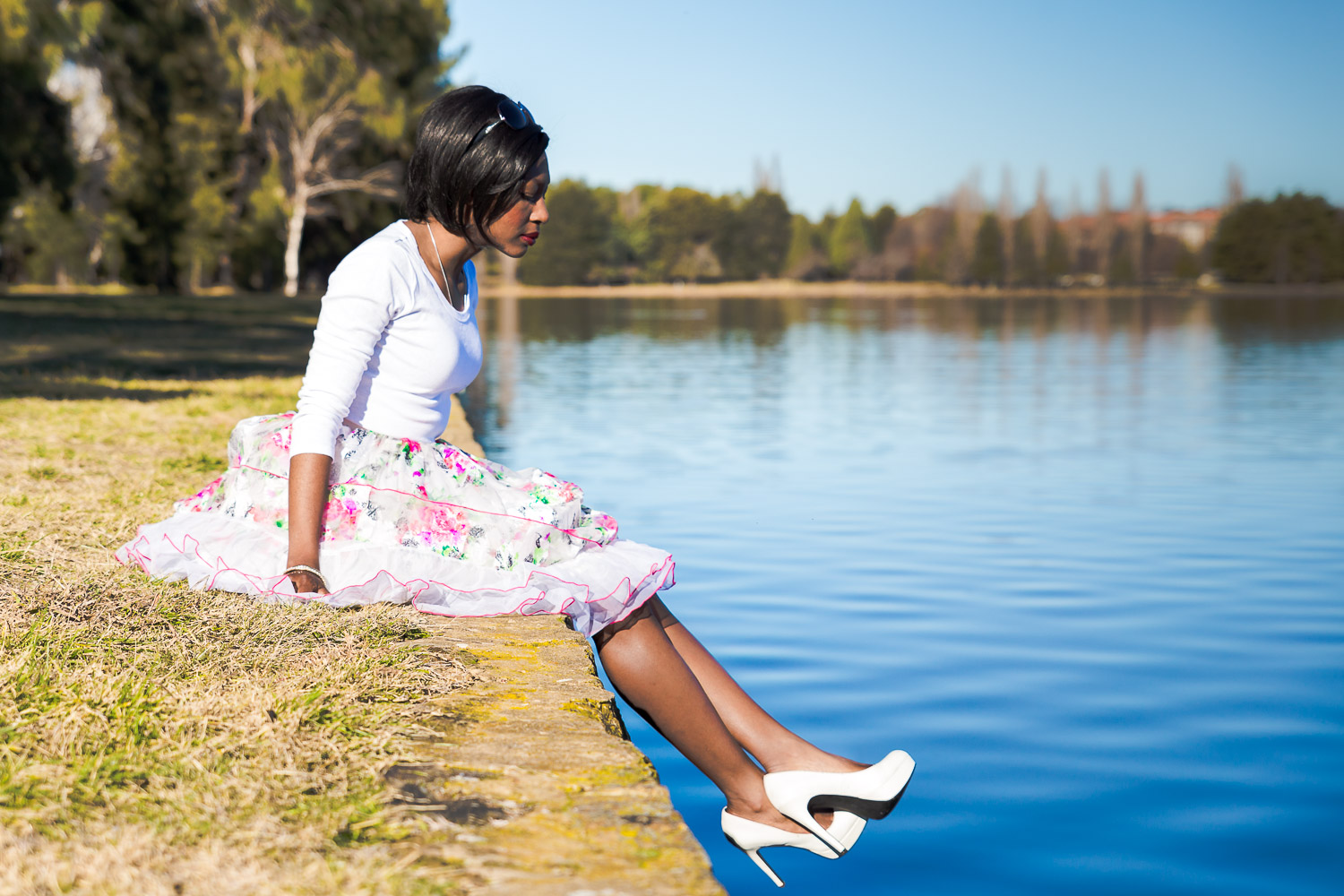Nina Ballerina is what my friend’s 4-year-old, Gracie, used to call me because she loved my tulle skirts. This pretty floral piece is a perfect example. To me though, the skirts are a little more Carrie Bradshaw than ballerina. At least that’s where the style inspo came from. Carrie Bradshaw is like THE modern style icon that carried the torch after the historic style legends like Grace, Audrey, etc. Carrie Bradshaw knows how to pull off vintage styles in modern ways. Her fearless style takes risks and incorporates different style personalities whilst staying true to herself. RESPECT.
Carrie Bradshaw, iconic character in Sex & the City.
Thanks to Sex and the City Costume Designer, Patricia Field, we will always be able to draw inspiration from the character Carrie Bradshaw’s timeless style.
Even though this pretty, feminine skirt is not vintage, it’s very much in line with my love for 1950s style. So far I’ve worn it to the opening night of an art exhibition, a film screening, a date and a party. It’s an easy go-to piece for occasions where you want to look cute, feminine and not too grown-up or dressed up. I’m no ballerina but I sure do love to dress like one!
STYLING
I chose to go simple for this look. It was a chilly day so I wore the skirt with a white long-sleeve thermal and plain white heels.
Style tip 1: For a patterned skirt like this one, try mixing with a pattered top. The trick is to make sure there is at one matching colour between the skirt and the top. Use your eyes and gut feel to know if the combo works together.
Style tip 2: If you prefer to keep it simple, try a plain coloured top like a white tank top, t-shirt or shirt with a collar. The length of this skirt gives the opportunity for shoe diversity from knee-high boots to ankle boots to heels or flats.
Style tip 3: It’s a voluminous skirt so opt for a smallish top if you’re able. This will create balance between the top and the bottom.
Outfit sourced from:
Preloved ‘ballerina’ skirt: Australian Red Cross Op Shop, Civic.
White thermal: Staple from my wardrobe
White heels: Staple from my wardrobe
Photography by Brunela Fenalte Photography
♥ Nina Gbor





























